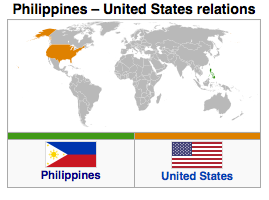An Eye On China: President Aquino Meets Obama – Analysis
By IPCS
By Anil Kumar
Philippine President Benigno Aquino III met President Barack Obama (6-9 June 2012) in the Oval Office for the first time. His visit is seen as an important step towards the revival of defence and security cooperation between the US and its former colony. The visit has raised a few questions. What kind of military cooperation does President Aquino want? On what terms is the US ready to extend that cooperation? Finally, how does it affect regional security?
The visit comes in the wake of China hardening its territorial claims in the East and South China Seas. There is a fundamental shift in China’s foreign and security policies in Southeast Asia. It is no more about reassuring its immediate neighbours of its ‘peaceful rise/development’. Post 2008, with the successful completion of the Beijing Olympics and growing economic dependence on China by the West after the global economic slowdown, there is a spurt of nationalistic fervour in China which has started calling for a bold and assertive foreign policy. This new policy approach explains China’s recent territorial claims against Japan, Vietnam and the Philippines in its neighbouring waters.
What kind of military cooperation?

Manila has been grappling with a territorially assertive China over the last two years. It finds its defence forces vastly outmatched by China’s growing military might to defend its territorial claims in the South China Sea (SCS). In the ongoing stand-off at Scarborough, just two Philippine vessels are pitted against 100 Chinese vessels. So seeking US assistance in developing a ‘minimum credible defence posture’ against Beijing topped Aquino’s agenda. He called for Pentagon’s help to upgrade its maritime surveillance capabilities so that Philippines – which has 7,107 islands – can better patrol its extensive coastlines. He welcomed US deployment of surveillance aircraft, such as Navy P-3C Orion planes and Global Hawk drones and expressed deep interest in acquiring land-based radar that could enable it to monitor the wide expanses of the SCS. The Philippines recently acquired a cutter from the US Coast Guard and is seeking two more of the ships to boost its naval forces. Manila also wants to buy F-16 fighter jets from Washington to beef up its air defense.
Importantly, Aquino secured Washington’s assurance that it would abide by its commitment under the Mutual Defense Treaty 1951, which lost steam after the closure of the US bases in the early 1990s. The treaty dictates that both nations would assist each other if attacked by a third country. The centrality and enduring value of the treaty was reiterated in a unanimous US Senate resolution passed in April at the completion of 60 years of its signing.
On what terms?
However, there seems to be a quid pro quo for the Washington’s military assistance to Manila. The Aquino administration, despite public protests, has conceded the use of former naval and air facilities in Subic, Zambales and in Clark Field in Pampanga by US warships and fighter planes while denying authorization for their use as permanent bases, like during the Cold War. Defense Secretary Leon Panetta has also indicated he is keen to include the Philippines in the annual rotation of some 2,500 US troops, stationed in Australia this year. This is a complete reversal for the nation after Philippine lawmakers some two decades ago forced the closing of American bases, including the closure in 1992 of the Subic Bay Naval Station under intense national protests. Philippine law still does not approve of a foreign base on its soil.
Impact on regional security
The visit has serious implications for regional security coming in the context of the US unveiling its new Asia-Pacific strategy early this year. Manila figures prominently in this strategy due to its strategic location right at the centre between Australia and Japan, the two US allies in the Asia-Pacific. Also the authorization for the reuse of Subic Bay by the US navy becomes significant in the context of US’ decision to raise it naval fleet to 60 per cent against 50 per cent by 2020 in the Western Pacific. Moreover, by extending diplomatic and military support to its treaty ally, the US has sent a reassuring signal to its other allies and partners in the region who have been urging it to enhance its military presence due to China’s growing naval reach and belligerent posture.
However, from the Beijing perspective, deepening military ties between Washington and Manila after the visit is another setback to egional security. For China, it is just the latest in a series of strategic moves aimed at its containment. It sees this move against the backdrop of Washington making great inroads into China’s strategic backyard. It has stationed troops in Australia, established a strategic partnership with Vietnam, held trilaterals with Japan and South Korea, and recently also started holding trilaterals with India and Japan, the two principal Asian rivals of China.
To conclude, President Aquino’s summit meet with President Obama necessitated by China’s assertive posture in the SCS is yet another geopolitical gain for the US, and inversely, yet another geopolitical loss for China given the zero-sum character of Sino-US relations in the Western Pacific.
Anil Kumar
PhD Scholar, DEAS, Delhi University
email: [email protected]
